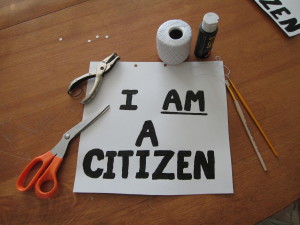Depends on your perspective. If you are a parent or concerned citizen finding your efforts to improve your schools blocked, it is a broken system that allows that to happen. It’s a case of no one being responsible for inaction where and when action is needed.
When “the system” becomes a barrier to improvement—through unacceptable policies and practices — the system is broken.
That doesn’t mean that all pieces are broken (not all schools, all teachers, all places), but it does mean the system failed to serve, protect, and educate ALL children as well as we can. So this is a place where my perspective differs from Diane Ravitch’s; she continues to say it “is not broken.” Where we do agree is here: “What began as a movement for testing and accountability has turned into a privatization movement.”
The result is unacceptable policies leading to unethical testing, scoring, and reporting practices furthering the already existing inequality of opportunity, segregation, and privatization. I hope people everywhere can agree on this; this is a cycle that is dismantling the system, piece-by-piece, policy-by-policy. Those openly aiming to privatize the public education system are boasting over the strides they have made in transforming the system.
One way the Friedman Foundation measures success is…
“the increase in the percentage of public dollars going to fund private school choice compared to the overall funds going to all K-12 education.”
This is the data they track! Comparing to overall funding!!!! Success is when the public system is fully privatized? Is that what the public has agreed to?
My theory, speaking as a parent with children in the system during the first big take-down (the No Child Left Behind policy), is that privatization never would have gotten this far if policymakers AND the public had been listening to the multitude of people trying to stop the political machine driving the movement and driving our children over the cliff in the process. But we can’t go back and change what happened; we can, however, change policies.
What we can do is move forward determined not to repeat the mistake of ignoring the crucial voices of people wanting to do the right thing for the right reason. We have to sort out those who are offering real, good, practical solutions to existing significant problems—true reformers —and those wishing to transform the system to fit their ideology or to profit the education-industrial complex.











